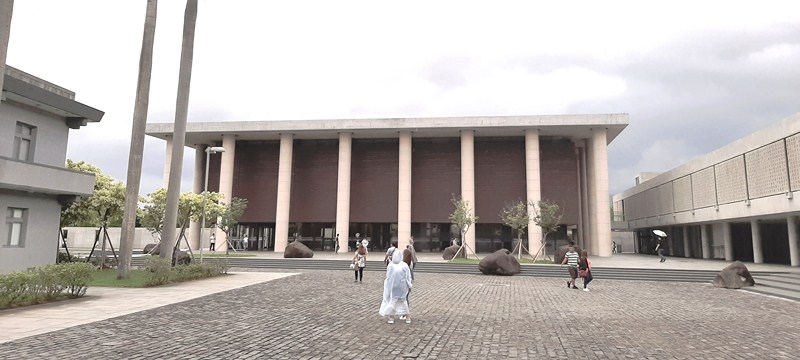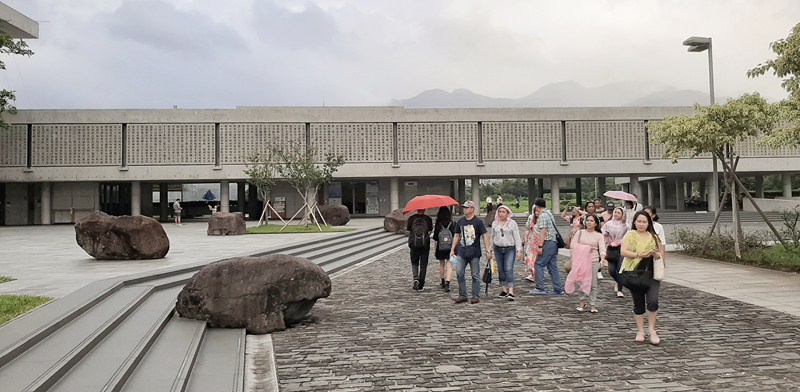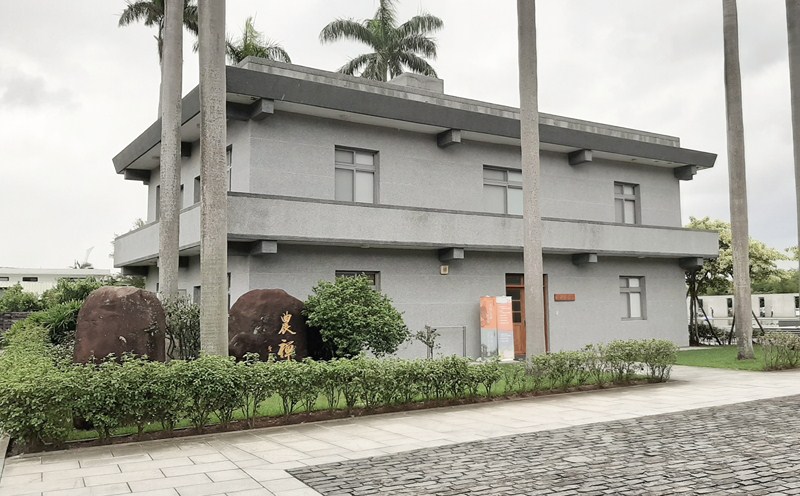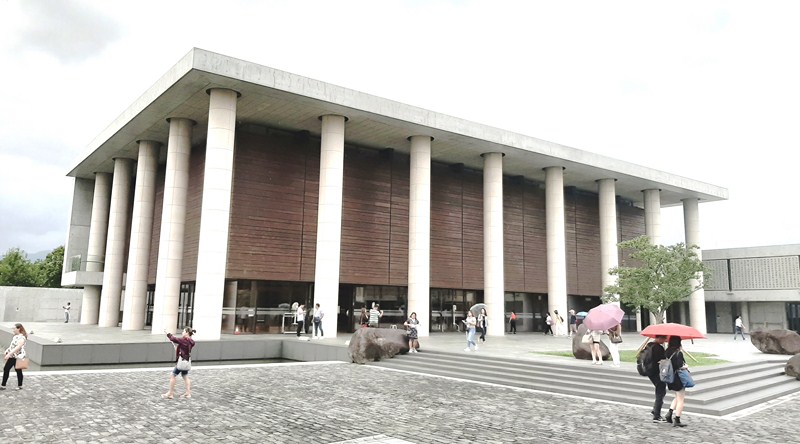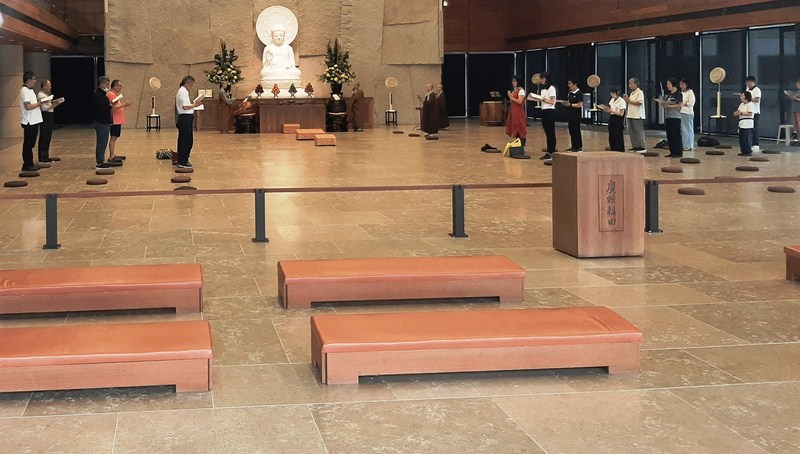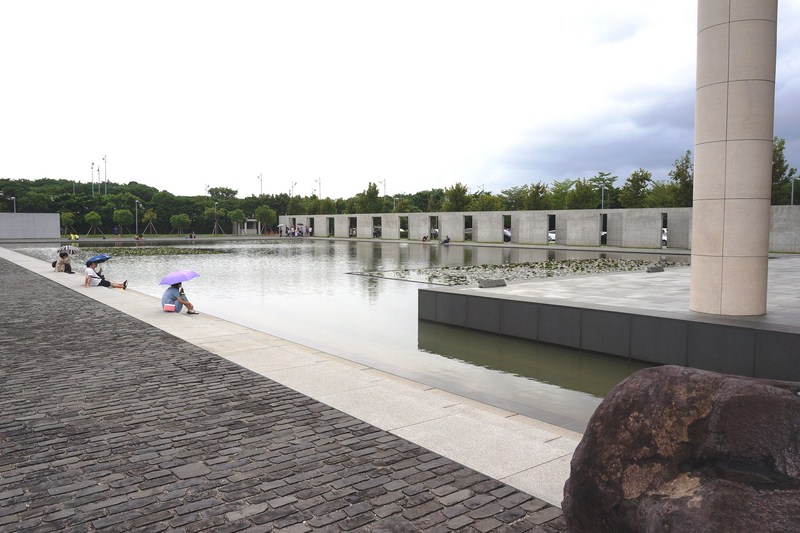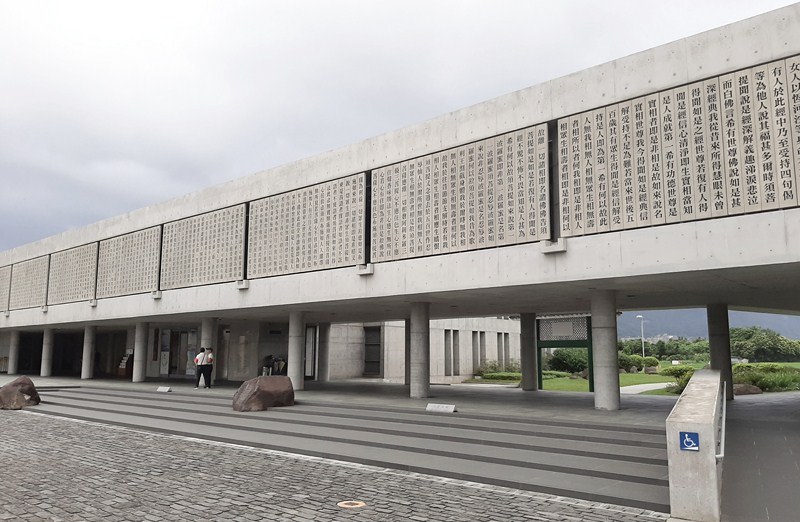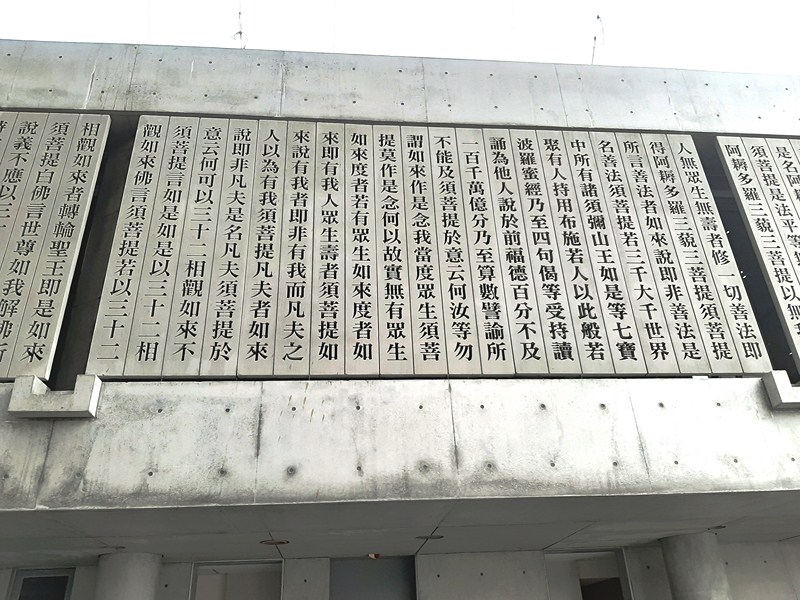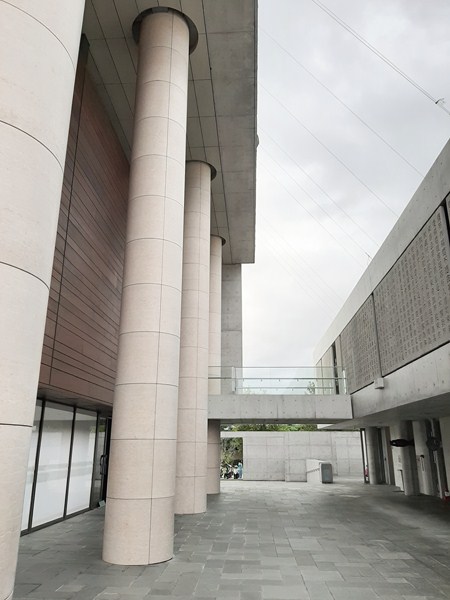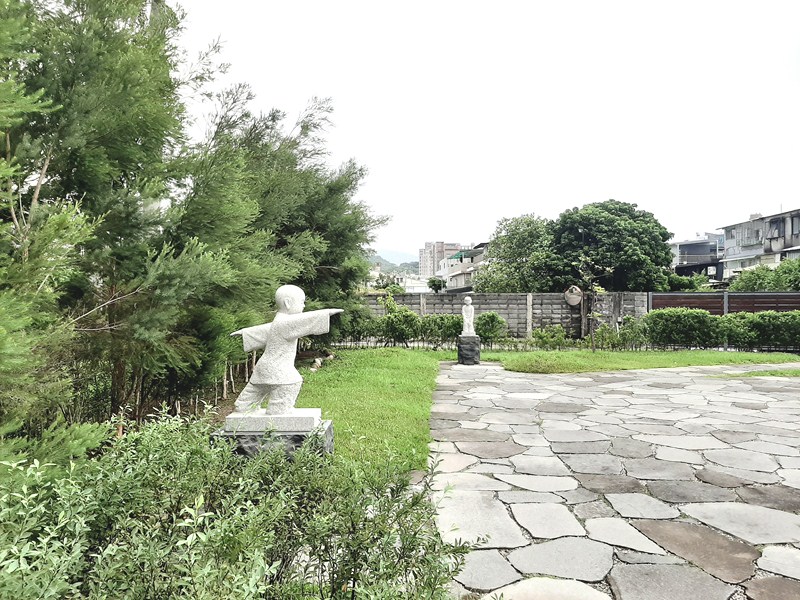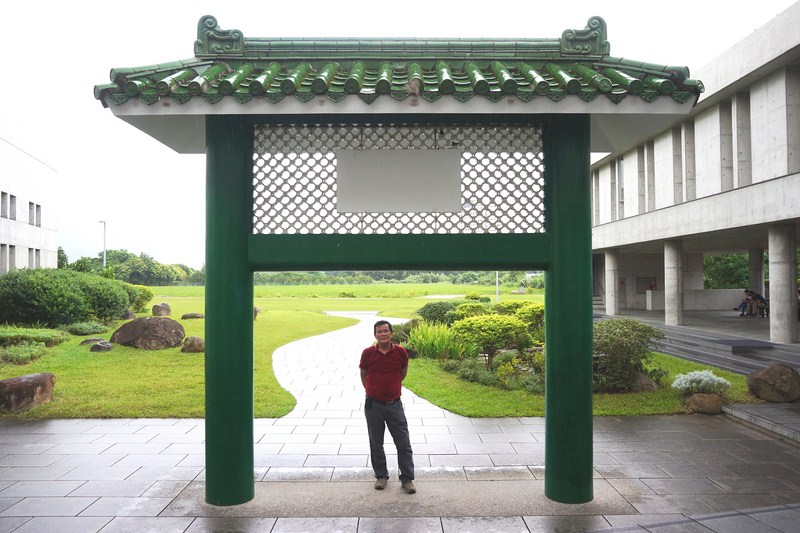After our one-hour tour of Beitou Thermal Valley, we again boarded our tourist bus for the short 3.7-km. (10 min.) drive to Nung Chan Monastery. Dropping off at Lane 65, Vincent Chen, our Eagle Tours guides, accompanied us as we walked, for 10 mins., to the entrance of the monastery. Though it stopped raining, the skies were still overcast when we arrived.
Check out “Beitou Thermal Valley”
The Nung Chan Monastery (meaning ‘Farming Ch’an‘), formally founded in 1975, is situated on 10,000 sq. m. (2.5 acres) of land acquired in the end of the 1960s by Master Dong Chu, a scholar monk and disciple of renowned Chinese Buddhist Master Taixu.
Located at the vast Guandu Plain, facing the Keelung River and leaning against the Datun Mountain, near Taipei, it is part of the umbrella organization called Dharma Drum Mountain. The monastery offers meditation instruction in English and holds regular meditation meetings.
Since 1975, to accommodate the growing number of devotees and monks living there, there have been various expansions and renovations on the site. The new, simple, tastefully designed main buildings, designed by Taiwanese Architect Kris Yao Ren-Xi of Artech Architects, were designed and constructed from 2010 – 2012 in a manner befitting a monastery.
The monastery has two walls, of different lengths, which provide the monastery an appropriate buffer against the bustling city. Circling around the walls, our view opened up towards a serene courtyard with an 80 m. long lotus pond as its main focus. On the left is the two- storey, 330 sq. m. (3,600 sq. ft.) farmhouse, started in 1971 by Master Dong Chu and completed in 1975.
The simple, serene and solid Main Buddha Hall, in the middle, features an upper wooden box with a transparent lower half, giving the impression that it is suspended in the air. Inside is a white jade statue of the Buddha, sitting in the lotus posture on the Sumeru throne. There was a service ongoing when we arrived, so we weren’t allowed to enter the hall.
Carved into the massive interior wooden wall, on the west side, is the famous “Heart Sutra,” in Chinese characters, which presents the Scriptures in hollow form.
The sunshine shines through the carved-out scriptures on the other side, filling the interior space with reflections. The hall is linked, via double height corridors, to the meditation hall, dining hall, and monk’s living quarters.
The large Water-Moon Pool, with its smaller lotus pond, is located in front of the Main Buddha Hall. The pond is flanked by a main circulation route and a covered corridor. A focal feature of the center’s landscape, the pool reflects Main Buddha Hall and Corridor, the clouds and the sky like a mirror when still, helping the overall aesthetic elements and providing a nice background for photographs.
The façade of an L-shaped building, on the right, is inscribed with over 5,000 characters of the Diamond Sutra, an important sutra of the Chan School.
The Way to Compassion, originally the main entrance of Nung Chan Monastery, was built in 1982 by Master Sheng Yen to demarcate the Monastery grounds. The Chan Hall has a sitting statue of Shakyamuni Buddha.
The Connection Corridor, extending along the Water-Moon Pool to the Main Buddha Hall and Chan Hall, demarcates space while permitting light to enter.
Its two walls of exposed concrete form a serene space. It was already starting to rain when we departed the monastery grounds to return to our bus.
Nung Chan Monastery: No. 89, Lane 65, Daye Rd., Beitou District, Taipei, Taiwan. Tel: 886-2-2893-3161. E-mail: jktie@ddm.org.tw. Website: www.ncm.ddm.org.tw.
Eagle Tours: +886-910-130-180 (Mr. Vincent Chen) and +886-932-013-880 (Ms. Joyce Chen).
How to Get There:
Take bus #218, #266 or #302 to the Da-Ye-Lu-Yi Stop, and then walk straight down Lane 65 for about 10 minutes. Via MRT, take the Danshui Line to Qiyan Station, turn left and walk down Sanhe Street until you reach Daye Road, turn left, pass the Volkswagen service center, and walk until you hit Lane 65. By car, take Daye Road and park at the Monastery’s parking lot.

